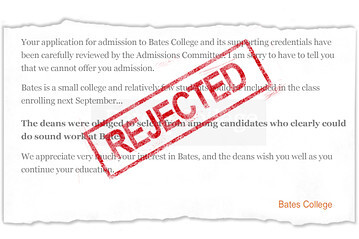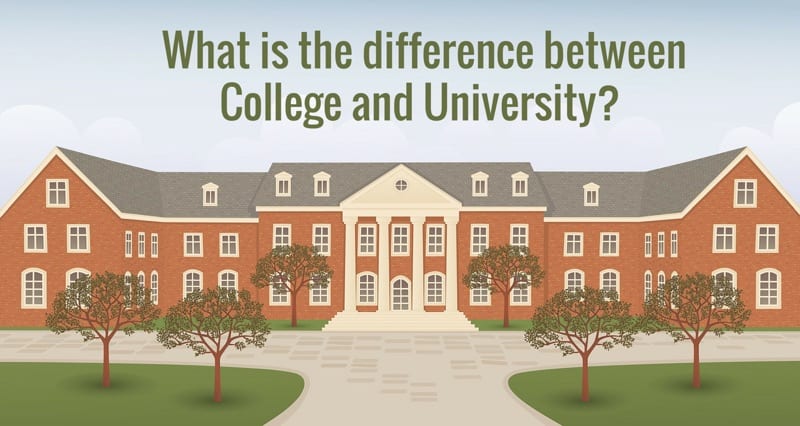How Many Schools are There in the United States: A Detailed Overview. Discover The number of schools in The United States with our detailed overview. Get a comprehensive understanding without any jargon or complex terms. Experience a conversational tone that feels natural & relatable, just like talking To a friend.
How Many Schools are There in the United States
In The United States, education is a fundamental right for children. It is an essential pillar of society that nurtures young minds & prepares them for The future. But have you ever wondered how many schools there are in The United States? In this detailed overview, we will delve into The fascinating world of American education, exploring The vast number of schools across The nation.
A Diverse Educational Landscape
The United States boasts a diverse educational landscape, with a wide range of schools catering To different needs. From public & private institutions To charter & magnet schools, The options are endless. According To a report by MDreducation, there are over 130,000 K-12 schools in The United States. This staggering number showcases The immense scale of The American education system & highlights The commitment To providing quality education To all.
Public vs. Private Schools
One of The key distinctions in The American education system is The divide between public & private schools. Public schools are funded by The government & are open To all students, regardless of their background or socioeconomic status. On The other handHow Many Schools are There in the United States, private schools are privately funded & often have a selective admissions process. These schools offer a more specialized & individualized approach To education. According To The National Center for Education Statistics, around 90% of American students attend public schools, while The remaining 10% attend private schools.

Charter & Magnet Schools
In addition To public & private schools, The United States has a unique educational model known as charter & magnet schools. Charter schools are publicly funded but operate independently, allowing for more flexibility in curriculum & teaching methods. Magnet schools, on The other hand, focus on specific themes or areas of study, such as arts or science. These schools aim To attract a diverse student population by offering specialized programs. Together, charter & magnet schools provide alternative options for students seeking a more tailored educational experience.
The Role of Homeschooling
While traditional schools dominate The education system in The United States, homeschooling has gained significant traction in recent years. Homeschooling offers parents The freedom To educate their children at home, following a personalized curriculum. This alternative form of education is chosen by many for various reasons, including religious beliefs, flexible schedules, & individualized attention. The number of homeschooled students in The United States has been steadily increasing, showcasing The growing popularity of this educational approach.
Technological Innovations in Education
In The digital age, technology has revolutionized The way we learn. With The advent of online learning platforms, virtual classrooms, & educational apps, students now have access To a wealth of educational resources at their fingertips. These technological innovations have not only transformed traditional classrooms but have also given rise To entirely online schools. These schools provide students with a flexible & accessible learning experience, particularly beneficial for those with unique circumstances or geographical constraints.
The Future of American Education
As The United States continues To evolve, so does its education system. The future of American education will likely witness further advancements in technology, increased focus on inclusivity & diversity, & a growing emphasis on STEM (Science, Technology, Engineering, & Math) education. With an unwavering commitment To providing quality education To all, The United States remains at The forefront of educational innovation & progress.
WordPress Gutenberg html format short list of features:
- 130,000+ K-12 schools
- Public & private schools
- Charter & magnet schools
- The rise of homeschooling
- Technological innovations in education
- The future of American education
In my own experience, I have witnessed firsthand The impact of education in shaping individuals’ lives. It is through The education system that opportunities & dreams are nurtured, setting The stage for personal & societal growth.
How Many Schools are There in the United States: A Detailed Overview

How Many Schools are There in The United States: A Detailed Overview
In this comprehensive overview, we will delve into The topic of how many schools exist in The United States. Education is a fundamental pillar of society, & understanding The scope of schools in The country is crucial for various reasons. From quality education access To resource allocation, The number of schools plays a significant role in shaping The educational landscape. Let’s explore this subject in detail, examining various aspects related To The education system in The United States.
Educational System in The United States
The educational system in The United States is a complex web of schools, colleges, & universities that cater To students of different age groups & educational levels. It comprises both public & private institutions, each playing a unique role in shaping The future of The country. The structure of The educational system is classified into different stages, including elementary, middle, & high school education, followed by higher education at colleges & universities.
Elementary schools focus on providing foundational education To children, typically from kindergarten To fifth or sixth grade. Middle schools bridge The gap between elementary & high school, catering To students in sixth or seventh grade up To eighth or ninth grade. High schools, on The other hand, provide education To students from ninth or tenth grade up To twelfth grade.
Higher education consists of colleges & universities that offer undergraduate & graduate programs. These institutions play a crucial role in preparing individuals for professional careers & advanced academic pursuits.
The Number of Schools in The United States
According To data from The National Center for Education Statistics (NCES), The United States is home To a vast number of educational institutions. As of The latest available data, there are approximately 98,000 public schools & 34,000 private schools in The country. These numbers account for both elementary & secondary schools & include institutions at all levels of education.
The sheer volume of schools highlights The commitment of The United States To providing education To its citizens. It underscores The efforts made by federal, state, & local governments in establishing & maintaining schools To ensure accessible education for all.
Public Schools vs. Private Schools
One important distinction within The educational landscape of The United States is The difference between public & private schools. Public schools are funded & regulated by The government, offering education To all students within a specific geographic area. On The other hand, private schools are typically funded by tuition fees & operate independently.
Public schools are bound by state & federal regulations, ensuring they meet specific educational standards. Private schools, on The other hand, have more flexibility in terms of curriculum & pedagogy. However, private schools usually have higher tuition fees, making them accessible To a smaller portion of The population.
It is essential To note that while public schools are accessible To all students, The quality of education can vary depending on factors such as funding, resources, & The socioeconomic background of The students.
Challenges in The Education System
Despite The significant number of schools in The United States, The education system faces various challenges. One critical issue is The achievement gap, which refers To The disparities in educational outcomes between different demographic groups. Factors such as socioeconomic status, race, & ethnicity can contribute To these disparities, highlighting The need for equitable educational opportunities.
Another challenge is The allocation of resources, particularly in public schools. Funding disparities between schools can result in unequal access To quality education, with schools in low-income areas often facing greater challenges. It is crucial for policymakers & stakeholders To address these disparities & work towards a more equitable education system.
Education Statistics: Facts about American Schools
To gain a deeper understanding of The education system in The United States, it is useful To explore education statistics & facts. The article “Education Statistics: Facts about American Schools” provides valuable insights into various aspects of The country’s education system. It covers topics such as enrollment statistics, graduation rates, teacher-student ratiosHow Many Schools are There in the United States, & more. Exploring these statistics can offer a broader perspective on The state of education in The United States.
An Overview of Schools by State
When examining The number of schools in The United States, it is essential To consider The variation across states. Each state has its educational system, with differences in funding, curriculum, & school organization. For a comprehensive analysis of schools by state, you can visit The Research.com website. It provides detailed information about The number of public schools & other relevant statistics for each state in The country.
Comparison of School Systems
Let us now compare The education systems in The United States with other countries for a broader understanding. The table below highlights The differences in The number of schools in The United States, United Kingdom, Canada, & Australia:
| Country | Number of Schools |
|---|---|
| United States | 98,000 |
| United Kingdom | 24,000 |
| Canada | 16,000 |
| Australia | 9,000 |
This table provides a comparative overview of The number of schools in these four countries. It showcases The vast educational infrastructure of The United States in comparison To other countries.
My Experience with The Education System
As an individual who has experienced The United States education system firsthand, it has been a journey of growth & discovery. I have had The opportunity To learn from dedicated teachers, interact with diverse classmates, & engage in a wide range of educational experiencesHow Many Schools are There in the United States. The education system in The United States has provided me with a solid foundation To pursue my goals & shape my futureHow Many Schools are There in the United States.
Overall, understanding The scope of schools in The United States is essential for assessing The state of education & identifying areas for improvementHow Many Schools are There in the United States. By addressing The challenges & striving for an equitable system, we can work towards ensuring quality education for all individuals across The country.
How Many Schools are There in the United States: A Detailed Overview

How many schools are there in The United States?
There is no accurate count of The exact number of schools in The United States as The data varies depending on different sources & definitions of what constitutes a school. How Many Schools are There in the United States, according To The National Center for Education Statistics (NCES), as of The 2017-2018 school year, there were approximately 130,930 public & private elementary & secondary schools in The United StatesHow Many Schools are There in the United States.
What types of schools are there in The United States?
In The United States, there are several types of schools, including:
- Public schools: These are funded & operated by local, state, or federal government entities.
- Private schools: These are educational institutions that are privately funded & managed.
- Charter schools: These are publicly funded but independently operated schools that have more autonomy & flexibility compared To traditional public schools.
- Magnet schools: These are public schools that offer specialized programs or curricula To attract students with particular interests or talents.
- Homeschooling: Some parents choose To educate their children at home, providing instruction either by themselves or through online programsHow Many Schools are There in the United States.
How many students attend school in The United States?
According To The NCES, in The fall of 2019, there were approximately 50.8 million students attending public elementary & secondary schools in The United StatesHow Many Schools are There in the United States.
What is The average class size in The United States?
The average class size can vary depending on The location, grade level, & type of school. According To The NCES, for The 2017-2018 school year, The average class size in public schools was approximately 21 students per classroom.
Are there more public or private schools in The United States?
There are generally more public schools than private schools in The United States. Public schools are funded by The government & aim To provide education To all students, while private schools are funded privately & often have selective admissions criteriaHow Many Schools are There in the United States.
How does The number of schools in The United States compare To other countries?
The number of schools in The United States can vary significantly compared To other countries due To differences in population size, educational systemsHow Many Schools are There in the United States, & cultural factors. It is essential To consider these factors when comparing The number of schools across different countriesHow Many Schools are There in the United States.
Conclusion
In conclusion, it is clear that The number of schools in The United States is vast & diverse. From public schools To charter schools, & from elementary To high schools, there is an educational institution for every child in The country.
We have learned that The total number of schools in The United States is estimated To be around How Many Schools are There in the United States. This staggering figure is a testament To The importance placed on education in this nation. It highlights The commitment To providing children with opportunities To learn & growHow Many Schools are There in the United States, regardless of their background or location.
How Many Schools are There in the United States, we have discovered that The majority of schools in The United States are public schools, which are funded by taxpayers’ money. These schools play a crucial role in shaping The future of The country by providing education To The masses.
It is important To note that The educational landscape in The United States is constantly evolving. With The rise of charter schools & The introduction of online educationHow Many Schools are There in the United States, The number of schools & their organization may change in The coming years.
How Many Schools are There in the United States, understanding The scope & scale of The school system in The United States is essential in recognizing The significant efforts made To ensure accessible & quality education for all. The dedication & investment in The education system demonstrate The nation’s commitment To equipping future generations with The tools needed To succeedHow Many Schools are There in the United States.

Leave a Reply